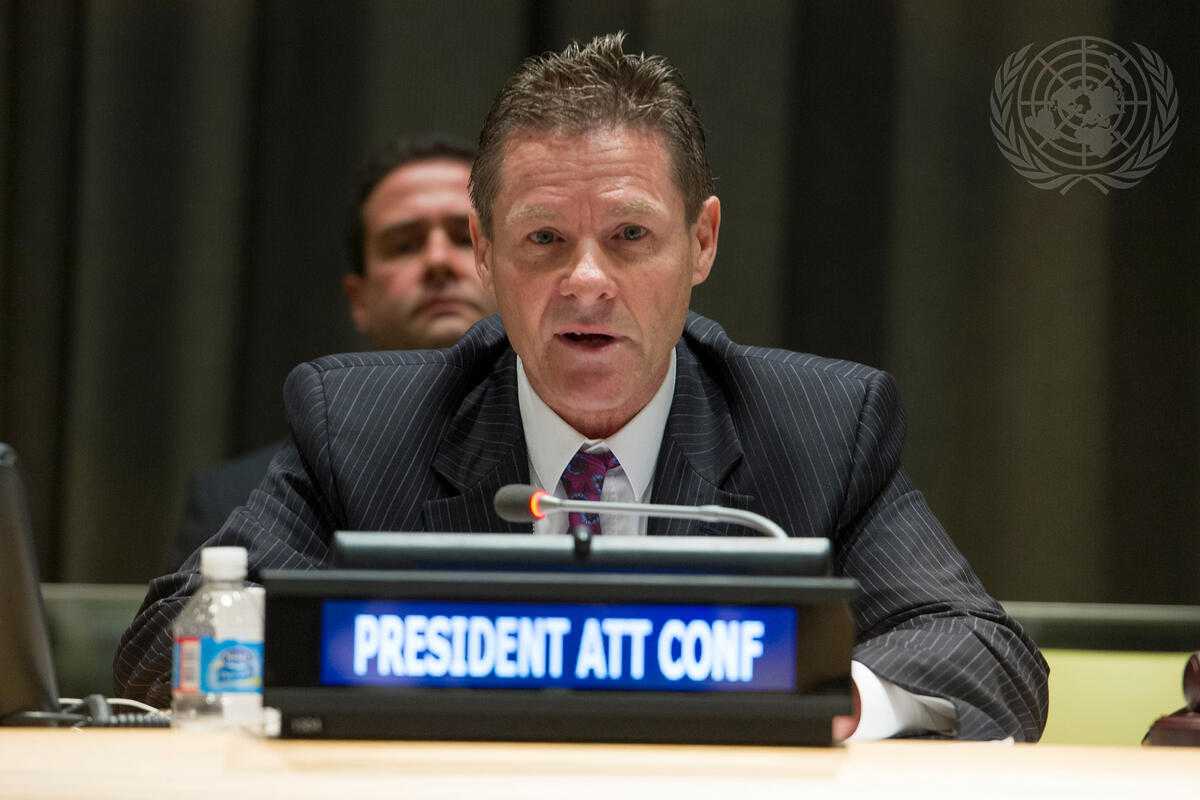The case of the Arms Trade Treaty
An international endeavour where the EU has achieved one of its most celebrated successes is the conclusion of the Arms Trade Treaty (ATT). The ATT, adopted by the UN General Assembly in April 2013, is the first global instrument to regulate international trade in conventional arms.

The ATT negotiations are considered one of the occasions where the EU has acted most effectively, thanks to institutional coordination among member states and the convergence of their interests in the field.1 The point of departure for the EU was the existence of consensus which had resulted in the adoption of internal instruments, most importantly the EU Code of Conduct for Arms Exports, initially negotiated by the Council Working Group on Conventional Arms in the early 1990s. The Code of Conduct stipulated a series of criteria that member states had to consider when making a decision on whether to authorise the transfer of armaments to a third country. The Code of Conduct, whose criteria included an assessment of the human rights situation in the recipient country, became binding in 2008 and was later included in the Treaty of Lisbon.
Not only did this document signify that the EU was united on this file, but it even provided a blueprint for some treaty provisions, which the EU presented as such when the UNGA mandated a working group with the preparation of the treaty draft in 20082. The resulting text of the ATT entails the diffusion of a model that was already operating within the EU, including institutionalised practices and structures such as the establishment of national authorisation bodies, end-use controls and lists of controlled military items.
Overall, the EU demonstrated an above-average performance in shaping key sections of the draft treaty, maintaining remarkable unity. The absence of any serious disagreements among EU member states prevented third powers from using divide-and-rule tactics, which could have hampered the EU’s negotiation ability. That said, there was still criticism that the strong internal cohesion did not increase the EU’s leadership capacity. The conclusion of the ATT represented a breakthrough in the field because, prior to its adoption, conventional arms had been the only type of weaponry not covered by universally binding rules. The successful input of the EU can be explained by the pre-existence of a unified, robust arms export control policy that obviated the need for internal agreement, contrary to the situation witnessed with the control of nuclear arms. This unity of purpose allowed the EU to set ambitious goals for the negotiation, and critically was supported by its vast experience in agenda-setting and bargaining in multilateral negotiations.